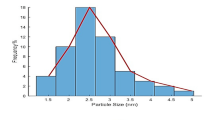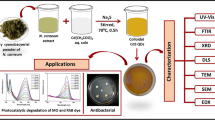Abstract
Bacterial reaction centers (BRC) from Rhodobacter sphaeroides were found to accelerate, about 100-fold, the reaction between tetryl (2,4,6-trinitrophenylmethylnitramine) explosive and n-lauryl-N-N-dimethylamine-N-oxide (LDAO) that results in the formation of picric acid-like product with characteristic UV–VIS absorption spectrum with peaks at 345 and 415 nm. Moreover, this product also affects the spectra of BRC cofactors in the NIR spectral region and stabilizes the conformational changes associated with slow charge recombination. The evolution of the NIR absorption changes correlated with the kinetics of the product formation. Comparison between the wild-type and the R26 carotenoid-less strain indicates that tetryl-LDAO reaction is roughly five times faster for R26, which allows for identifying the carotenoid binding site as the optimal reaction site. Another, less-defined reaction site is located in the BRC’s hydrophobic cavity. These effects are highly selective for tetryl and not observed for several other widespread nitric explosives; slowed-down charge recombination allows for distinguishing between tetryl and QB-site herbicides. The current limit of detection is in the ppb range or ~ 100 nM. Details of the molecular mechanisms of the reactions and perspectives of using these effects in bioassays or biosensors for explosives detection are also discussed.






Similar content being viewed by others
References
Andréasson U, Andréasson L-E (2003) Characterization of a semi-stable, charge-separated state in reaction centers from Rhodobacter Sphaeroides. Photosynth Res 75:223–233. https://doi.org/10.1023/A:1023944605460
Anusevicius Ž, Šíarlauskas J, Nivinskas H, Segura-Aguilar J, Čínas N (1998) DT-diaphorase catalyzes N-denitration and redox cycling of tetryl. FEBS Lett 436:144–148. https://doi.org/10.1016/S0014-5793(98)01115-6
Behrend C, Heesche-Wagner K (1999) Formation of hydride-meisenheimer complexes of picric acid (2,4,6-trinitrophenol) and 2,4-dinitrophenol during mineralization of picric acid by Nocardioides Sp. strain CB 22–2. Appl Environ Microbiol 65:1372–1377. https://doi.org/10.1128/AEM.65.4.1372-1377.1999
Bhalla V, Xin Z, Zazubovich V (2011) Detection of explosive compounds using photosystem II-based biosensor. J Electroanal Chem 657:84–90. https://doi.org/10.1016/j.jelechem.2011.03.026
Blankenship RE (1992) Origin and early evolution of photosynthesis. Photosynth Res 33:91–111. https://doi.org/10.1007/BF00039173
Carpentier R, Lemieux S, Mimeault M, Purcell M, Goetze DC (1989) A photoelectrochemical cell using immobilized photosynthetic membranes. J Electroanal Chem Interfacial Electrochem 276:391–401. https://doi.org/10.1016/0022-0728(89)87280-8
Charlesa PT, Shriver-Lakea LC, Francesconi SC, Churillac AM, Rangasammya JG, Patterson CH Jr, Deschamps JR, Kusterbeck AW (2004) Characterization and performance evaluation of in vivo and in vitro produced monoclonal anti-TNT antibodies for the detection of TNT. J Immunol Methods 284:15–26. https://doi.org/10.1016/j.jim.2003.09.010
Deshmukh SS, Protheroe C, Ivanescu M-A, Lag S, Kálmán L (2018) Low potential manganese ions as efficient electron donors in native anoxygenic bacteria. Biochim Biophys Acta Bioenergy 1859:227–233. https://doi.org/10.1016/j.bbabio.2018.01.002
Deshmukh SS, Akhavein H, Williams JC, Allen JP, Kalman L (2011a) Light-induced conformational changes in photosynthetic reaction centers: impact of detergents and lipids on the electronic structure of the primary electron donor. Biochemistry 50:5249–5262. https://doi.org/10.1021/bi200595z
Deshmukh SS, Tang K, Kálmán L (2011b) Lipid binding to the carotenoid binding site in photosynthetic reaction centers. J Am Chem Soc 133:16309–16316. https://doi.org/10.1021/ja207750z
Deshmukh SS, Williams JC, Allen JP, Kálmán L (2011c) Light-induced conformational changes in photosynthetic reaction centers: dielectric relaxation in the vicinity of the dimer. Biochemistry 50:340–348. https://doi.org/10.1021/bi101496c
Deshmukh SS, Williams JC, Allen JP, Kálmán L (2011d) Light-induced conformational changes in photosynthetic reaction centers: redox-regulated proton pathway near the dimer. Biochemistry 50:3321–3331. https://doi.org/10.1021/bi200169y
El Kasmi A, Leopold MC, Galligan R, Robertson RT, Saavedra SS, El Kacemi K, Bowden EF (2002) Adsorptive immobilization of cytochrome c on indium/tin oxide (ITO): electrochemical evidence for electron transfer-induced conformational changes. Electrochem Commun 4:177–181. https://doi.org/10.1016/S1388-2481(01)00299-5
Ermler U, Fritzsch G, Buchanan SK, Michel H (1994) Structure of the photosynthetic reaction centre from Rhodobacter Sphaeroides at 2.65 Å resolution: cofactors and protein-cofactor interactions. Structure 2:925–936. https://doi.org/10.1016/S0969-2126(94)00094-8
Feher G (1971) Some chemical and physical properties of a bacterial reaction center particle and its primary photochemical reactants. Photochem Photobiol 14:373–387. https://doi.org/10.1111/j.1751-1097.1971.tb06180.x
Feher G, Allen JP, Okamura MY, Rees DC (1989) Structure and function of bacterial photosynthetic reaction centres. Nature 339:111–116. https://doi.org/10.1038/339111a0
Harper C, Llados F (1995) Toxicological profile for tetryl (2,4,6-trinitrophenyl-N-methylnitramine). Agency for Toxic Substances and Disease Registry, Atlanta, Georgia, p 103
Hubert C, Dossmann H, Machuron-Mandard X, Tabet J-C (2013) ESI formation of a meisenheimer complex from tetryl and its unusual dissociation. J Mass Spectrom 48:306–311. https://doi.org/10.1002/jms.3156
Kálmán L, Gajda T, Sebban P, Maróti P (1997) PH-metric study of reaction centers from photosynthetic bacteria in micellular solutions: protonatable groups equilibrate with the aqueous bulk phase. Biochemistry 36:4489–4496. https://doi.org/10.1021/bi961860o
Katona G, Andréasson U, Landau EM, Andréasson LE, Neutze RJ (2003) Lipidic cubic phase crystal structure of the photosynthetic reaction centre from Rhodobacter Sphaeroides at 2.35 Å resolution. Mol Biol 331:681–692. https://doi.org/10.1016/S0022-2836(03)00751-4
Kayser EG, Burlinson NE, Rosenblatt DH (1984) Kinetics of hydrolysis and products of hydrolysis and photolysis of tetryl. NSWC/TR-84-68; Naval Surface Weapons Center Silver Spring, MD.
Kim H, Gilmore CM, Pique A, Horwitz JS, Mattoussi H, Murata H, Kafafi ZH, Chrisey DB (1999) Electrical, optical, and structural properties of indium–tin–oxide thin films for organic light-emitting devices. J Appl Phys 86:6451–6461. https://doi.org/10.1063/1.371708
Kleinfeld D, Okamura MY, Feher G (1984) Electron transfer in reaction centers of Rhodopseudomonas Sphaeroides. I. determination of the charge recombination pathway of D+ QAQ-B and free energy and kinetic relations between Q-AQB and QAQ-B. Biochim Biophys Acta Bioenergy 766:126–140. https://doi.org/10.1016/0005-2728(84)90224-X
Koblizek M, Masojidek J, Komenda J, Kucera T, Pilloton R, Mattoo AK, Giardi MT (1998) A sensitive photosystem II-based biosensor for detection of a class of herbicides. Biotechnol Bioeng 60:664–669. https://doi.org/10.1002/(SICI)1097-0290(19981220)60:6%3C664::AID-BIT3%3E3.0.CO;2-B
Koepke J, Krammer E-M, Klingen AR, Sebban P, Ullmann GM, Fritzsch G (2007) PH modulates the quinone position in the photosynthetic reaction center from Rhodobacter Sphaeroides in the neutral and charge separated states. J Mol Biol 371:396–409. https://doi.org/10.1016/j.jmb.2007.04.082
Matsumoto K, Torimaru A, Ishitobi S, Sakai T, Ishikawa H, Toko K, Miura N, Imato T (2005) Preparation and characterization of a polyclonal antibody from rabbit for detection of trinitrotoluene by a surface plasmon resonance biosensor. Talanta 68:305–311. https://doi.org/10.1016/j.talanta.2005.08.054
McComb JC, Stein RR, Wraight CA (1990) Investigations on the influence of headgroup substitution and isoprene side-chain length in the function of primary and secondary quinones of bacterial reaction centers. Biochim Biophys Acta Bioenergy 1015:156–171. https://doi.org/10.1016/0005-2728(90)90227-U
Müh F, Schulz C, Schlodder E, Jones MR, Rautter J, Kuhn M, Lubitz W (1998) Effects of zwitterionic detergents on the electronic structure of the primary donor and the charge recombination kinetics of P+ QA- in native and mutant reaction centers from Rhodobacter Sphaeroides. Photosynth Res 55:199–205. https://doi.org/10.1023/A:1005960003482
Oettmeier W, Masson K (1982) Picrate as an inhibitor of photosystem II in photosynthetic electron transport. Eur J Biochem 122:163–167. https://doi.org/10.1111/j.1432-1033.1982.tb05862.x
Okamura MY, Paddock ML, Graige MS, Feher G (2000) Proton and electron transfer in bacterial reaction centers. Biochim Biophys Acta Bioenerg 1458:148–163. https://doi.org/10.1016/S0005-2728(00)00065-7
Peveler WJ, Roldan A, Hollingsworth N, Porter MJ, Parkin I (2016) Multichannel detection and differentiation of explosives with a quantum dot array. ACSNano 10:1139–1146. https://doi.org/10.1021/acsnano.5b06433
Reed DW (1969) Isolation and composition of a photosynthetic reaction center complex from Rhodopseudomonas sphaeroides. J Biol Chem 244:4936–4941
Rhee K-H, Morris EP, Barber J, Kühlbrandt W (1998) Three-dimensional structure of the plant photosystem II reaction centre at 8 Å resolution. Nature 396:283–286. https://doi.org/10.1038/24421
Roszak AW, McKendrick K, Gardiner AT, Mitchell IA, Isaacs NW, Cogdell RJ, Hashimoto H, Frank HA (2004) Protein regulation of carotenoid binding: gatekeeper and locking amino acid residues in reaction centers of Rhodobacter sphaeroides. Structure 12:765–773. https://doi.org/10.1016/j.str.2004.02.037
Roth M, Arnoux B, Ducruix A, Reiss-Husson F (1991) Structure of the detergent phase and protein-detergent interactions in crystals of the wild-type (strain Y) Rhodobacter sphaeroides photochemical reaction center. Biochemistry 30:9403–9413. https://doi.org/10.1021/bi00103a003
Sandén B, Mansson P, Hellgren A-C (2005) Explosive detection using biosensor technique. In: Proceedings of the 230th ACS national meeting, Washington, DC, Aug 28–Sept 1
Shah MM, Spain JC (1996) Elimination of nitrite from the explosive 2,4,6-trinitrophenyl-methylnitramine (tetryl) catalyzed by ferredoxin NADP oxidoreductase from spinach. Biochem Biophys Res Comm 220:563–568. https://doi.org/10.1006/bbrc.1996.0443
Singh S (2007) Sensors—an effective approach for the detection of explosives. J Hazard Mater 144:15–28. https://doi.org/10.1016/j.jhazmat.2007.02.018
Smith RG, D’Souza N, Nicklin S (2008) A review of biosensors and biologically-inspired systems for explosives detection. Analyst 133:571–584. https://doi.org/10.1039/B717933M
Stowell MH, McPhillips TM, Rees DC, Soltis SM, Abresch E, Feher G (1997) Light-induced structural changes in photosynthetic reaction center: implications for mechanism of electron-proton transfer. Science 276:812–816. https://doi.org/10.1126/science.276.5313.812
Suemori Y, Nagata M, Nakamura Y, Nakagawa K, Okuda A, Inagaki J, Shinohara K, Ogawa M, Iida K, Dewa T et al (2006) Self-Assembled monolayer of light-harvesting core complexes of photosynthetic bacteria on an amino-terminated ITO electrode. Photosynth Res 90:17–21. https://doi.org/10.1007/s11120-006-9101-9
Sun X, Wang Y, Lei Y (2015) Fluorescence based explosive detection: from mechanisms to sensory materials. Chem Soc Rev 44:8019–8061. https://doi.org/10.1039/C5CS00496A
Toal SJ, Trogler WC (2006) Polymer sensors for nitroaromatic explosives detection. J Mater Chem 16:2871–2883. https://doi.org/10.1039/B517953J
van Mourik F, Reus M, Holzwarth AR (2001) Long-lived charge-separated states in bacterial reaction centers isolated from Rhodobacter sphaeroides. Biochim Biophys Acta Bioenerg 1504:311–318. https://doi.org/10.1016/S0005-2728(00)00259-0
Wang S, Lin S, Lin X, Woodbury NW, Allen JP (1994) Comparative study of reaction centers from purple photosynthetic bacteria: isolation and optical spectroscopy. Photosynth Res 42:203–215. https://doi.org/10.1007/BF00018263
Wen-Zong W, Speciner ND, Edwards GS (1980) Mutagenic activity of tetryl, a nitroaromatic explosive, in three microbial test systems. Toxicol Lett 5:11–17. https://doi.org/10.1016/0378-4274(80)90142-3
Xu Q, Gunner MR (2001) Trapping conformational intermediate states in the reaction center protein from photosynthetic bacteria. Biochemistry 40:3232–3241. https://doi.org/10.1021/bi002326q
Yeates TO, Komiya H, Chirino A, Rees DC, Allen JP, Feher G (1988) Structure of the reaction center from Rhodobacter Sphaeroides R26 and 2.4.1: protein-cofactor (bacteriochlorophyll, bacteriopheophytin, and carotenoid) interactions. Proc Natl Acad Sci USA 85:7993–7997. https://doi.org/10.1073/pnas.85.21.7993
Acknowledgements
This work was supported by Grants from Natural Science and Engineering Research Council of Canada (NSERC) and Concordia University to VZ and LK. DM has been partially supported by NSERC Postgraduate Scholarship. Samples of explosives were kindly provided by Natural Resources Canada.
Funding
Funding was provided by Natural Sciences and Engineering Research Council of Canada and Concordia University, Montreal, Canada.
Author information
Authors and Affiliations
Contributions
VZ and LK designed the research, DM performed experiments, DM and LK performed the data analysis; DM, LK, and VZ wrote the manuscript.
Corresponding authors
Ethics declarations
Conflict of interest
Authors declare no conflicting interests.
Additional information
Publisher's Note
Springer Nature remains neutral with regard to jurisdictional claims in published maps and institutional affiliations.
Electronic supplementary material
Below is the link to the electronic supplementary material.
Rights and permissions
About this article
Cite this article
Modafferi, D., Zazubovich, V. & Kálmán, L. Bound detergent molecules in bacterial reaction centers facilitate detection of tetryl explosive. Photosynth Res 145, 145–157 (2020). https://doi.org/10.1007/s11120-020-00770-7
Received:
Accepted:
Published:
Issue Date:
DOI: https://doi.org/10.1007/s11120-020-00770-7




